Hugo Silva
What to Do When Your Discrete Optimization Is the Size of a Neural Network?
Feb 15, 2024



Abstract:Oftentimes, machine learning applications using neural networks involve solving discrete optimization problems, such as in pruning, parameter-isolation-based continual learning and training of binary networks. Still, these discrete problems are combinatorial in nature and are also not amenable to gradient-based optimization. Additionally, classical approaches used in discrete settings do not scale well to large neural networks, forcing scientists and empiricists to rely on alternative methods. Among these, two main distinct sources of top-down information can be used to lead the model to good solutions: (1) extrapolating gradient information from points outside of the solution set (2) comparing evaluations between members of a subset of the valid solutions. We take continuation path (CP) methods to represent using purely the former and Monte Carlo (MC) methods to represent the latter, while also noting that some hybrid methods combine the two. The main goal of this work is to compare both approaches. For that purpose, we first overview the two classes while also discussing some of their drawbacks analytically. Then, on the experimental section, we compare their performance, starting with smaller microworld experiments, which allow more fine-grained control of problem variables, and gradually moving towards larger problems, including neural network regression and neural network pruning for image classification, where we additionally compare against magnitude-based pruning.
The MONET dataset: Multimodal drone thermal dataset recorded in rural scenarios
Apr 11, 2023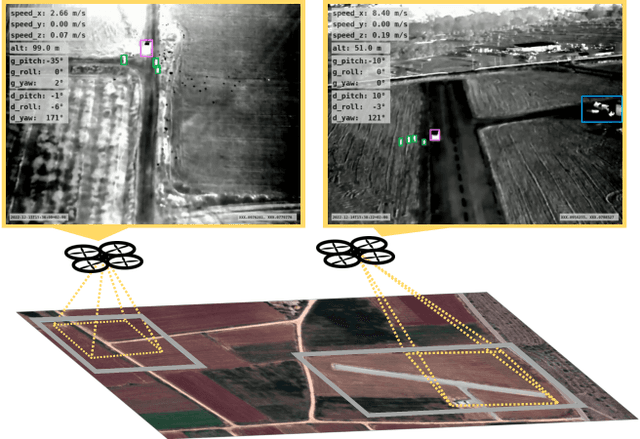
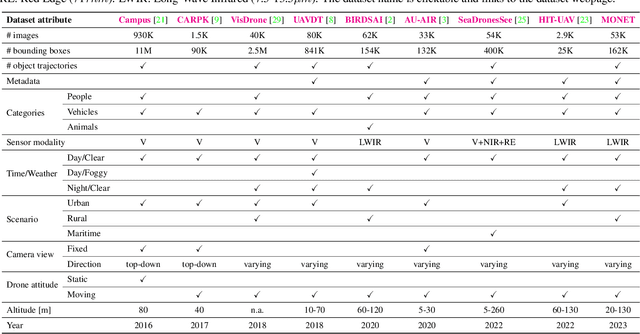
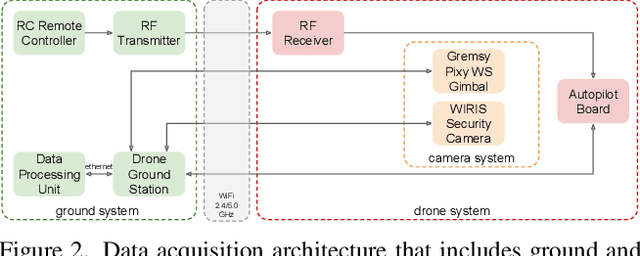
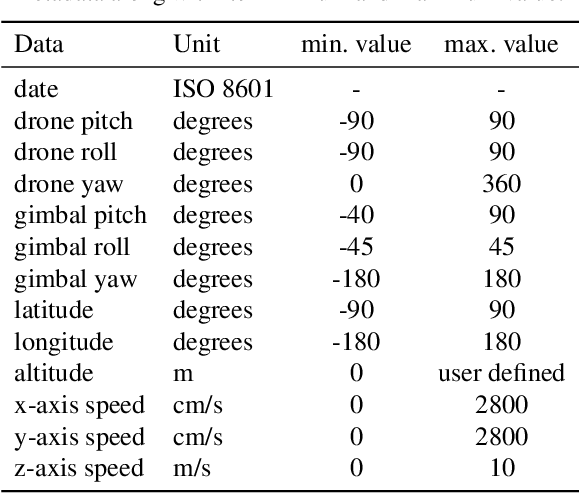
Abstract:We present MONET, a new multimodal dataset captured using a thermal camera mounted on a drone that flew over rural areas, and recorded human and vehicle activities. We captured MONET to study the problem of object localisation and behaviour understanding of targets undergoing large-scale variations and being recorded from different and moving viewpoints. Target activities occur in two different land sites, each with unique scene structures and cluttered backgrounds. MONET consists of approximately 53K images featuring 162K manually annotated bounding boxes. Each image is timestamp-aligned with drone metadata that includes information about attitudes, speed, altitude, and GPS coordinates. MONET is different from previous thermal drone datasets because it features multimodal data, including rural scenes captured with thermal cameras containing both person and vehicle targets, along with trajectory information and metadata. We assessed the difficulty of the dataset in terms of transfer learning between the two sites and evaluated nine object detection algorithms to identify the open challenges associated with this type of data. Project page: https://github.com/fabiopoiesi/monet_dataset.
Greedification Operators for Policy Optimization: Investigating Forward and Reverse KL Divergences
Jul 17, 2021
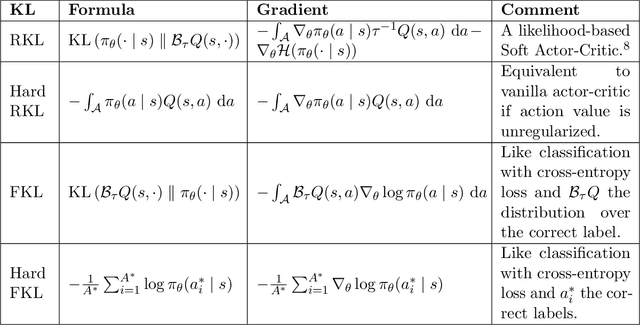


Abstract:Approximate Policy Iteration (API) algorithms alternate between (approximate) policy evaluation and (approximate) greedification. Many different approaches have been explored for approximate policy evaluation, but less is understood about approximate greedification and what choices guarantee policy improvement. In this work, we investigate approximate greedification when reducing the KL divergence between the parameterized policy and the Boltzmann distribution over action values. In particular, we investigate the difference between the forward and reverse KL divergences, with varying degrees of entropy regularization. We show that the reverse KL has stronger policy improvement guarantees, but that reducing the forward KL can result in a worse policy. We also demonstrate, however, that a large enough reduction of the forward KL can induce improvement under additional assumptions. Empirically, we show on simple continuous-action environments that the forward KL can induce more exploration, but at the cost of a more suboptimal policy. No significant differences were observed in the discrete-action setting or on a suite of benchmark problems. Throughout, we highlight that many policy gradient methods can be seen as an instance of API, with either the forward or reverse KL for the policy update, and discuss next steps for understanding and improving our policy optimization algorithms.
Winning the Lottery with Continuous Sparsification
Dec 10, 2019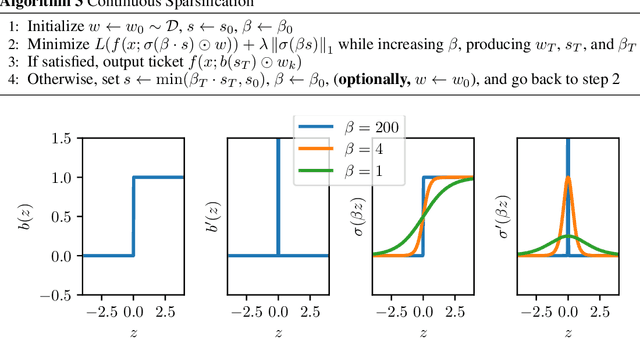
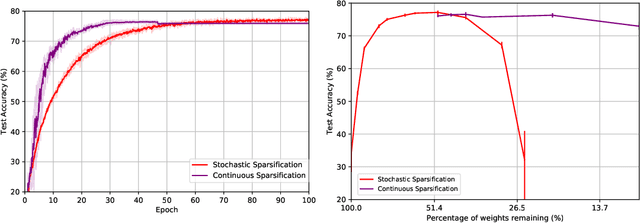
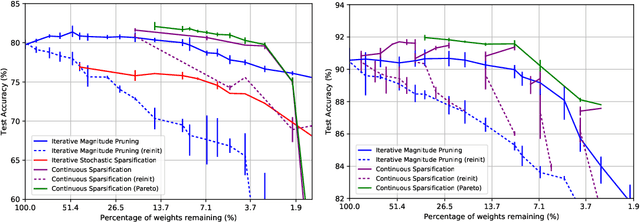
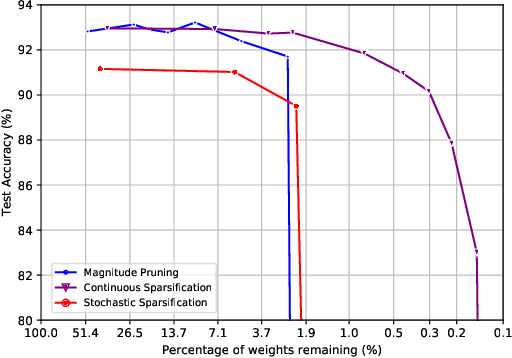
Abstract:The Lottery Ticket Hypothesis from Frankle & Carbin (2019) conjectures that, for typically-sized neural networks, it is possible to find small sub-networks which train faster and yield superior performance than their original counterparts. The proposed algorithm to search for "winning tickets", Iterative Magnitude Pruning, consistently finds sub-networks with $90-95\%$ less parameters which train faster and better than the overparameterized models they were extracted from, creating potential applications to problems such as transfer learning. In this paper, we propose Continuous Sparsification, a new algorithm to search for winning tickets which continuously removes parameters from a network during training, and learns the sub-network's structure with gradient-based methods instead of relying on pruning strategies. We show empirically that our method is capable of finding tickets that outperforms the ones learned by Iterative Magnitude Pruning, and at the same time providing faster search, when measured in number of training epochs or wall-clock time.
 Add to Chrome
Add to Chrome Add to Firefox
Add to Firefox Add to Edge
Add to Edge